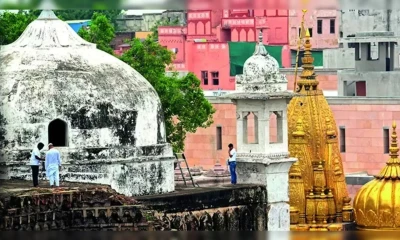Edited by Deepali Verma
The Archaeological Survey of India (ASI) recently made public its report detailing findings from the Gyanvapi mosque site. The survey has unveiled inscriptions at the site in both Sanskrit and Dravidian languages, that belong to the period from the 12th to the 17th centuries, which point to a North-South cultural amalgamation.
The ASI’s findings of the site revealed a total of 34 inscriptions, with one specifically dated to January 1, 1613 CE. These inscriptions are written in languages such as Telugu, Tamil, Kannada, and Sanskrit, suggesting a historical amalgamation of cultures, debunking long-held assumptions about a North-South divide.
One inscription in Telugu exhibiting from the 17th century mentions individuals named Mallana-bhatlu and Narayana-bhatlu. While the other in Tamil script, appears to reference a charity established by Narayanan Raman that dates back to the 16th or 17th century.
A Sanskrit inscription talks of Rudra, that is another name for Shiva, and finds a mention of the month Sravana, which places it in the 17th century. Furthermore, a Kannada inscription records the reverence of two individuals, Dodarasayya and Narasimha, from the 16th century.
These findings showcase both the existence of a pre-existing Hindu temple as well as indicate that parts of earlier structures that were repurposed in subsequent construction.
The ASI has undergone a scientific survey of the Gyanvapi premises to ensure whether the mosque was constructed over a pre-existing structure of a Hindu temple following an order of the district court passed on July 21 last year.
The ASI survey report was submitted to the district court in a sealed cover on December 18, 2023.

















